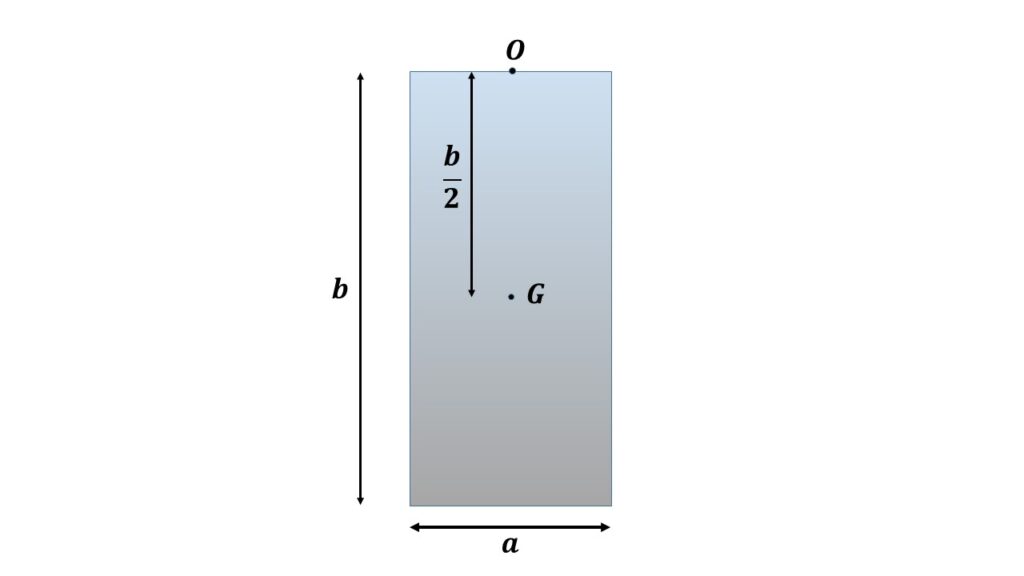Ans.
Let us consider a rectangular plate having edges of lengths \( a \) and \( b \) respectively. This rectangular plate hangs vertically from the edge of length \( a \). Let \( M \) be the total mass of the rectangular plate and \( G \) be the centre of gravity of the plate.

(i) Time period for small oscillation:
Let \( I \) be the moment of inertia of the plate about the horizontal axis through the point of suspension \( O \) and perpendicular to the plate lying in the vertical plane.
\( \displaystyle{I=\frac{1}{3}Mb^2} \)
[ to know the derivation of the above equation (CLICK HERE) ]
Now the time period of small oscillation is
\( \displaystyle{T=2\pi\sqrt{\frac{I}{Mg\left(OG\right)}}} \)
[ to know the derivation of the above equation (CLICK HERE) ]
where, \( g \) is the acceleration due to gravity.
From Fig.1 we get, \( OG=\frac{b}{2} \)
therefore, \( \displaystyle{T=2\pi\sqrt{\frac{I}{Mg\left(\frac{b}{2}\right)}}} \)
or, \( \displaystyle{T=2\pi\sqrt{\frac{\frac{1}{3}Mb^2}{Mg\left(\frac{b}{2}\right)}}} \)
or, \( \displaystyle{T=2\pi\sqrt{\frac{2b}{3g}}}\tag{1} \)
(ii) Length of the equivalent simple pendulum:
Let, \( L \) be the length of the equivalent simple pendulum, then
\( \displaystyle{T=2\pi\sqrt{\frac{L}{g}}} \)
Comparing with the equation (1), we get
\( \displaystyle{L=\frac{2}{3}b} \)